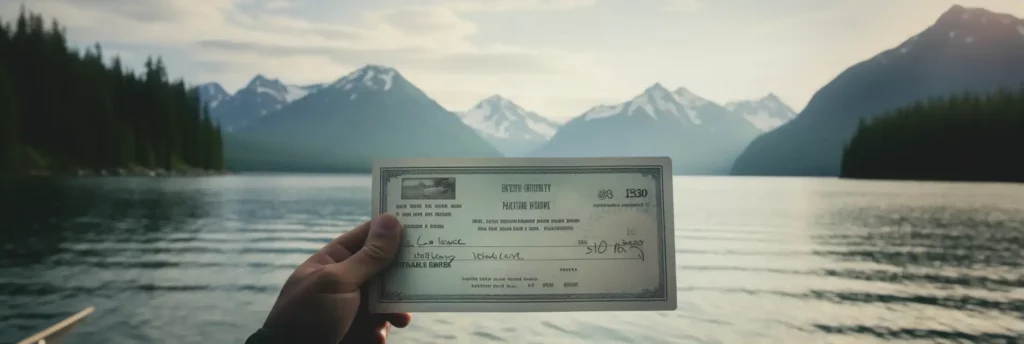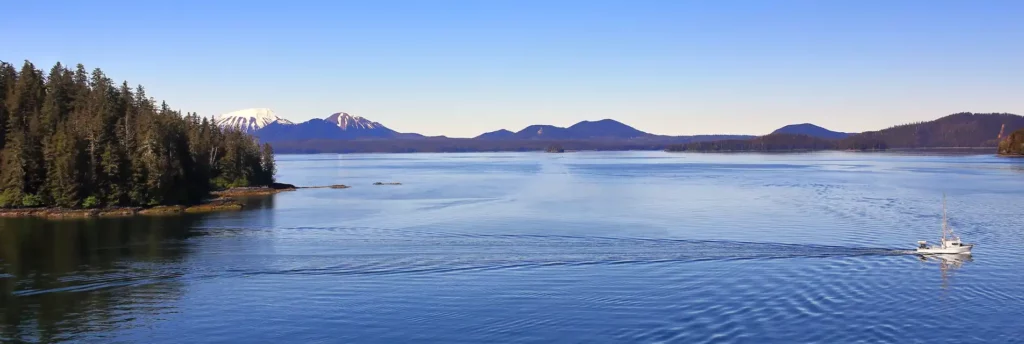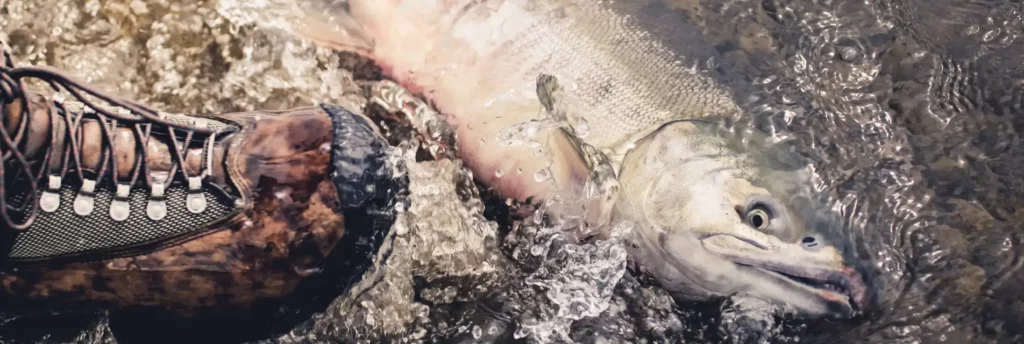Fishing in the pristine waters of Alaska is an experience like no other. From the icy glaciers to the vast open seas, Alaska offers a diverse range of fishing opportunities. However, before you cast your line, it’s essential to understand the importance of having a valid fishing license. Not only does it ensure that you’re fishing legally, but it also contributes to the conservation and management of Alaska’s rich aquatic resources.
Importance of having a fishing license in Alaska
Every angler, whether a resident or a visitor, must possess a valid fishing license to fish in Alaska. This requirement ensures that fishing activities are regulated, and the state’s aquatic ecosystems are protected. The funds collected from license sales go directly towards conservation efforts, research, and maintaining the quality of fishing spots.
Benefits of purchasing a license
By purchasing a fishing license, you’re directly contributing to the preservation of Alaska’s natural beauty and rich biodiversity. These funds aid in stocking programs, habitat restoration, and educational initiatives. Moreover, it ensures sustainable fishing, allowing future generations to enjoy the same privileges.
Types of Fishing Licenses in Alaska
Alaska offers various fishing licenses catering to different needs. Whether you’re a resident or a non-resident, there’s a license tailored for you.
| License Type | Description |
|---|---|
| Resident vs. Non-resident licenses | Residents have the advantage of availing licenses at a reduced rate compared to non-residents. However, it’s crucial to provide proof of residency when applying. |
| Freshwater vs. Saltwater licenses | Depending on where you plan to fish – freshwater bodies or the open sea – you’ll need to obtain the respective license. Ensure you’re aware of the specific regulations for each type. |
| Daily, Annual, and Lifetime licenses | Alaska provides flexibility with its licensing options. Whether you’re in the state for a short trip or a lifelong resident, there’s a license duration that fits your needs. |
Cost of Fishing Licenses
The cost of fishing licenses in Alaska varies based on several factors, including the type of license, duration, and whether you’re a resident or non-resident.
Breakdown of fees for different types of licenses
| License Type | Price |
|---|---|
| Resident License | $20.00 |
| Non-Resident License | $15.00 |
| Resident King Salmon Stamp | $10.00 |
Discounts and exemptions
Certain groups, such as senior citizens and active military personnel, may be eligible for discounts or exemptions. It’s advisable to check the official Alaska Department of Fish and Game website for the most up-to-date information on discounts.
How to Obtain a Fishing License in Alaska
Obtaining a fishing license in Alaska is a straightforward process, designed to get you out on the water as quickly as possible. Here’s a step-by-step guide to help you secure your license.

Online process
The easiest and most convenient way to get your fishing license is through the Alaska Department of Fish and Game’s online portal. Simply:
- Visit the official website.
- Navigate to the ‘Licenses and Permits’ section.
- Choose the type of license you need.
- Fill in the required details and make the payment.
- Once processed, you can print your license immediately.
In-person locations
If you prefer obtaining your license in person, several locations across Alaska offer this service, including:
- Walmart: Most Walmart stores in Alaska have a dedicated section for fishing licenses.
- Local sporting goods stores: Many local stores offer fishing licenses. It’s a good idea to call ahead and check availability.
- Alaska Department of Fish and Game offices: These offices provide licenses and can also offer additional information and resources.
Required documents and eligibility
When applying for a fishing license, especially if you’re claiming resident rates, you’ll need to provide proof of residency. This can be a state-issued ID, utility bill, or other official documents. Ensure you have these documents handy, whether you’re applying online or in person.
Note: Always keep your fishing license with you when fishing. In case of inspections, you’ll need to show it to the authorities.
![Image: A person showing their fishing license. Description: A close-up shot of a hand holding an Alaska fishing license, with a fishing rod in the background.]
Regulations and Requirements
Fishing in Alaska is a privilege that comes with its set of rules and regulations to ensure the sustainability of its rich aquatic resources. Whether you’re a resident or a visitor, understanding these regulations is crucial.
Categories of Fishing in Alaska
Alaska classifies fishing into four main categories:
| Fishing Type | Description |
|---|---|
| Sport Fishing | This is recreational fishing where the primary motivation is personal pleasure rather than financial gain. |
| Subsistence Fishing | This type of fishing is primarily for personal, family, and community consumption. |
| Commercial Fishing | This involves catching fish for sale or profit. |
| Personal Use Fishing | This is a unique Alaskan category where residents catch fish for personal consumption using methods that are not allowed in sport fishing. |
It’s essential to know which category you fall into as different rules apply to each.
Official Regulations
The Alaska Department of Fish and Game provides detailed regulations for each fishing category. These regulations cover everything from the type of gear you can use to the number of fish you can catch. It’s essential to familiarize yourself with these rules before heading out.
- Officially Adopted Regulations for Statewide Finfish and Supplemental Issues
- Regulations for Kuskokwim Salmon Fisheries
- Regulations for the Alaska Peninsula, Aleutian Island, and Chignik Finfish Areas
Importance of Adhering to Regulations
By following the set regulations, you’re not only ensuring that you fish legally but also contributing to the conservation efforts in Alaska. Overfishing can lead to a decline in fish populations, affecting the ecosystem and future generations of anglers.

Remember, fishing regulations in Alaska are not just rules but a commitment to preserving the state’s rich aquatic heritage.
Renewal and Penalties
Renewing Your Fishing License in Alaska
In Alaska, fishing licenses are typically valid for the calendar year, expiring on December 31st. It’s essential to renew your license annually to continue enjoying the state’s fishing opportunities legally.
- Online Renewal: The most convenient way to renew your fishing license is online. The Alaska Department of Fish and Game’s online store offers a seamless renewal process. Ensure you have your previous license details and payment method ready.
- In-Person Renewal: If you prefer an in-person experience, you can visit local license vendors or the Alaska Department of Fish and Game offices across the state.
Penalties for Fishing Without a License
Fishing without a valid license in Alaska can lead to severe consequences. The state takes its fishing regulations seriously to preserve its rich aquatic resources.
| Violation Consequences | Description |
|---|---|
| Fines | If caught fishing without a license, you might face hefty fines. The exact amount can vary based on the nature of the violation and whether it’s a repeat offense. |
| Confiscation | In some cases, authorities might confiscate your fishing equipment, including rods, reels, and even your catch. |
| Suspension | Repeat offenders risk having their fishing privileges suspended, preventing them from obtaining a license for a specified period. |
It’s always recommended to keep your license with you while fishing and ensure it’s up-to-date to avoid any potential penalties.

Frequently Asked Questions
What are the age requirements for a fishing license in Alaska?
- In Alaska, anyone aged 18 and older is required to have a fishing license. However, residents under the age of 18 do not need a license.
How do I replace a lost fishing license?
- If you lose your fishing license in Alaska, you can obtain a duplicate from the Alaska Department of Fish and Game’s website or any license vendor for a small fee.
Can tourists fish in Alaska without a license?
- No, tourists or non-residents must purchase a non-resident fishing license to fish in Alaska. There are various options available, including one-day, three-day, seven-day, and annual licenses.
Is it mandatory to carry my fishing license while fishing?
- Yes, you must have your fishing license in your possession while fishing and show it to any peace officer if requested.
Are there any specific regulations for non-resident anglers?
- Non-resident anglers must adhere to the same fishing regulations as residents. However, they might have different bag limits or restricted areas, especially for certain species.
How does Alaska ensure sustainable fishing?
- Alaska has a robust system of monitoring and regulations to ensure that fish populations remain sustainable. This includes setting bag and possession limits, seasons, and size restrictions.
Can I transfer my fishing license to someone else?
- No, fishing licenses in Alaska are non-transferable. Each angler must have their own valid license.
What happens if I catch a fish not in season?
- Catching fish out of season or those that are protected can result in fines and penalties. It’s essential to be aware of the fishing seasons and regulations for the area you’re fishing in.
Are there any fishing education programs in Alaska?
- Yes, the Alaska Department of Fish and Game offers various educational programs and resources for anglers of all ages to promote responsible and sustainable fishing.
Do I need a separate license for ice fishing?
- No, your regular fishing license covers ice fishing as well. However, there might be specific regulations and seasons for ice fishing that you need to be aware of.

